

I never considered myself a coffee drinker. Yes, I’d enjoy the occasional espresso drink, but I never developed a daily habit. When I saw others line up at the cafe near my office, I saw it as an addiction and crutch, certainly not something I’d fall in love with.
Well, the pandemic turned the world upside down. With that, my hours-long train commute was gone. I was then searching for an activity to mark the transition from waking to working. So, I finally gave the world of coffee a chance.
Years in, I can confidently say I was missing out. Granted, I’m now dependent on coffee by drinking a cup or two every morning. However, the experience, particularly the sensory experience of crafting coffee by hand, makes it worthwhile.
The senses
Sight
The experience begins in the kitchen, where on a countertop is perched my setup. Just like with my desk, the gestalt of carefully chosen items sets the tone. Seeing the combination of materials — ceramic, wood, plastic, aluminum, steel, etc. — infuses me with serenity.
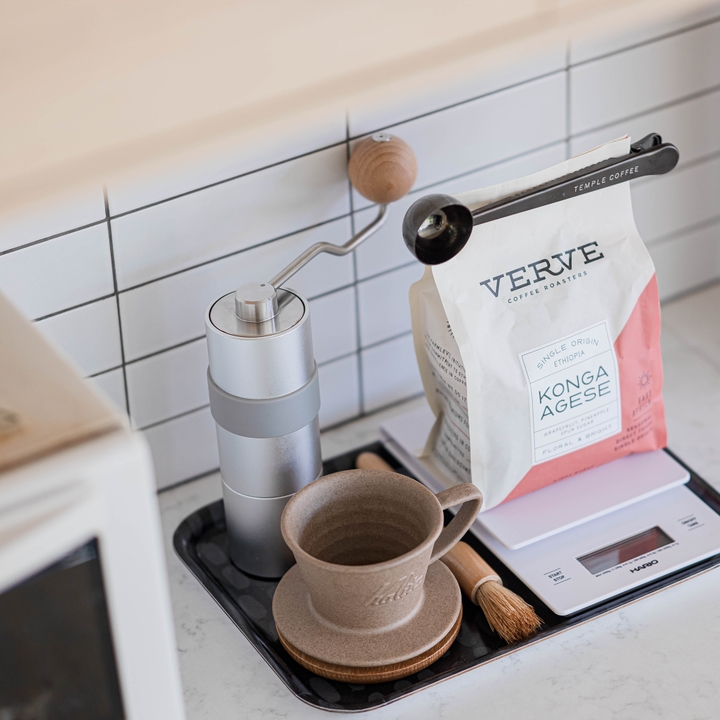
Smell
The journey resumes as I open the bag, unleashing the aroma of freshly roasted beans. This smell, not the taste, attracted me in the first place. I stick to local fair trade craft coffee to ensure quality and freshness.

As I continue, smell is activated over and over, when the beans are ground, when they are brewed, and finally, when I bring a steaming cup of coffee to my mouth.
Hearing
My ears pick up the faint bubbling of water in the kettle, the first of a symphony of sounds. The bubbling is followed by the clinking of coffee beans falling into the cup, the satisfying crunching of beans as they disintegrate within the grinder, and the gentle dribbling of water into the bed of grounds.

Touch
Materiality comes back into play with touch. My hands are active participants, like when tightly clutching the grinder. Light roasts are hard, requiring quite an effort; dark roasts are soft and crumble easily.

Touch continues its contribution by discerning the heft and texture of the various coffee implements. It also communicates the warmth of the water when I cup the mug in my hands.
Time
Time is perhaps the most elusory of the senses. When we are engrossed in an activity, we hardly notice it. In the boundaries between activities, though, time is more present than ever. While making coffee, time is on my mind, not adding stress or reminding me of the next thing to do. In the coffee-making experience, time is one of many variables like temperature and weight that factor into the quality of the result.

While making coffee, I feel free of the clutches of time, instead using it as a tool.
Taste
One would think that taste is the central sense among the rest, but to me, it’s merely the icing on the cake. When I’m drinking coffee, I’ve already enjoyed a multi-sensory journey. Of course, the coffee must taste good, and it usually does.
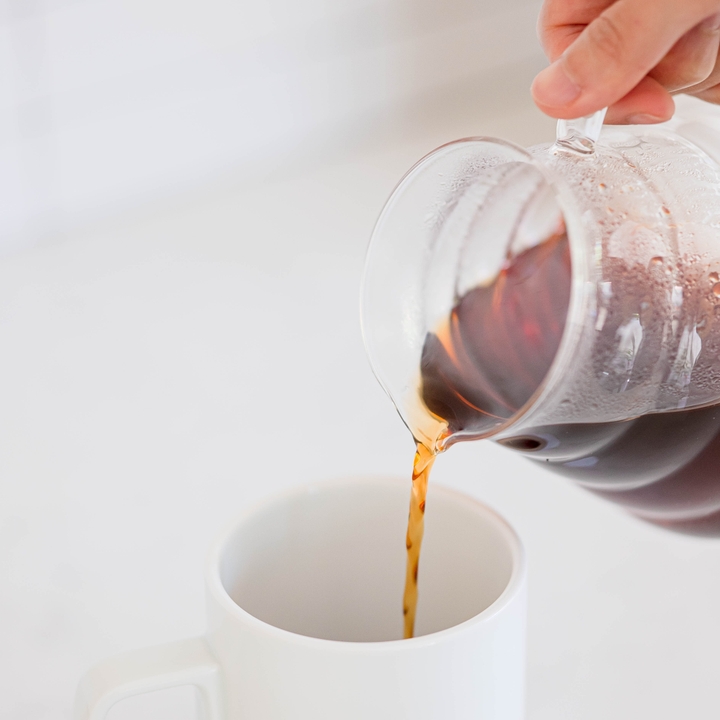
These days, with so many unique takes on craft coffee, each experience offers a cornucopia of flavors. I’m usually pleased with floral, fruity varieties but am also happily surprised by the hints of umami or smoke in others.
Equipment
I gravitated to pour-over-style coffee for its simplicity. I need a way to heat water and a scale. The rest of the process is purely mechanical, with no electronics, no screens. On top of that, numerous new, affordable brewers are coming to market, providing a chance to experiment without breaking the bank.
Mixing and matching my various pieces makes coffee different every day.
Grinding
Helor 101 grinder
I waited quite a while to find one of these used. The Helor 101 is one of the most minimal hand grinders I’ve seen. Its sibling, the Option-O Remi, is simpler (closing with magnets instead of friction) but has a lower capacity.
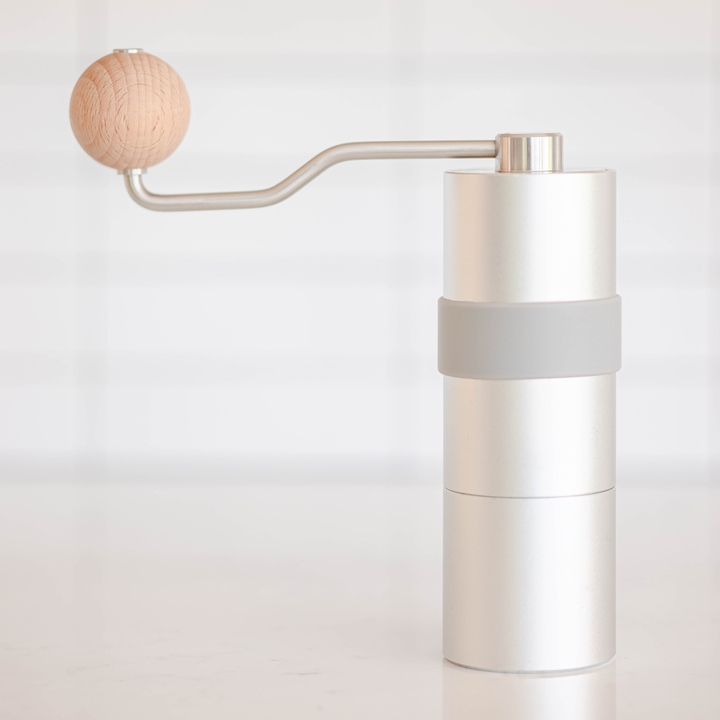
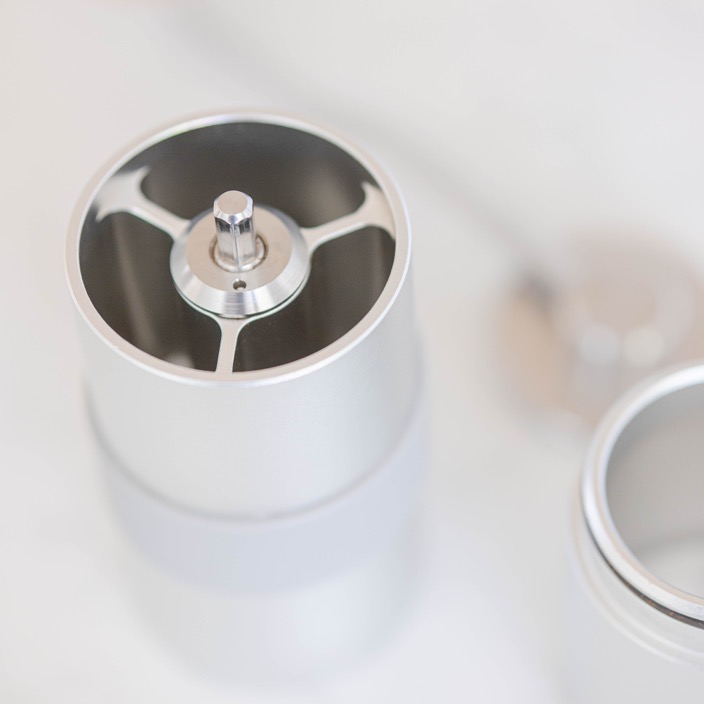
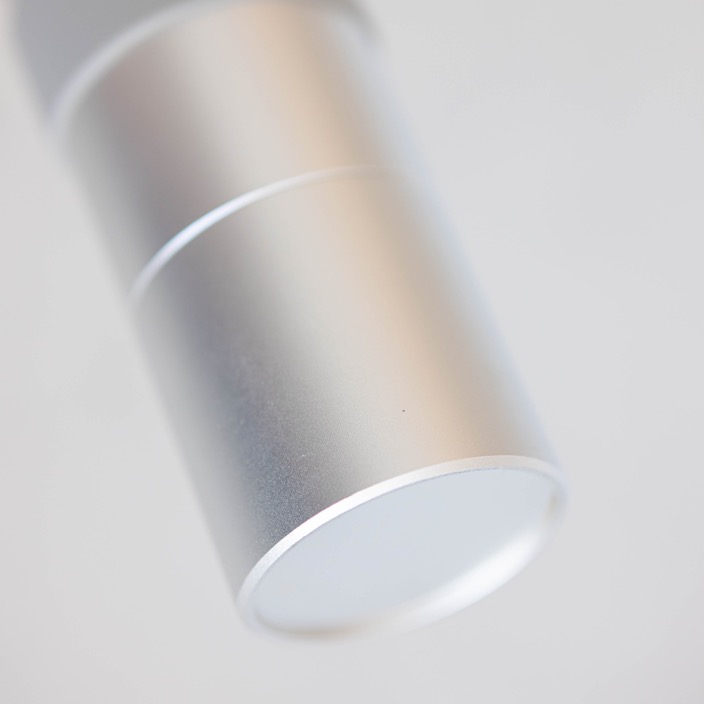
The materials, fit, and finish are top-notch. Just a hex wrench and two pin wrench (both included) are needed to take the grinder apart to clean or switch out burrs. I haven’t needed to, though.
The surface is a bit slippery, so I prefer using the silicone sleeve when grinding light and medium roasts.
Hario V60 drip scale
I wanted a simple, white scale with an LCD readout. Hario’s scale fit the bill. The only thing I would change is the touch-sensitive buttons. Proper mechanical buttons would be more satisfying and reduce accidental presses.
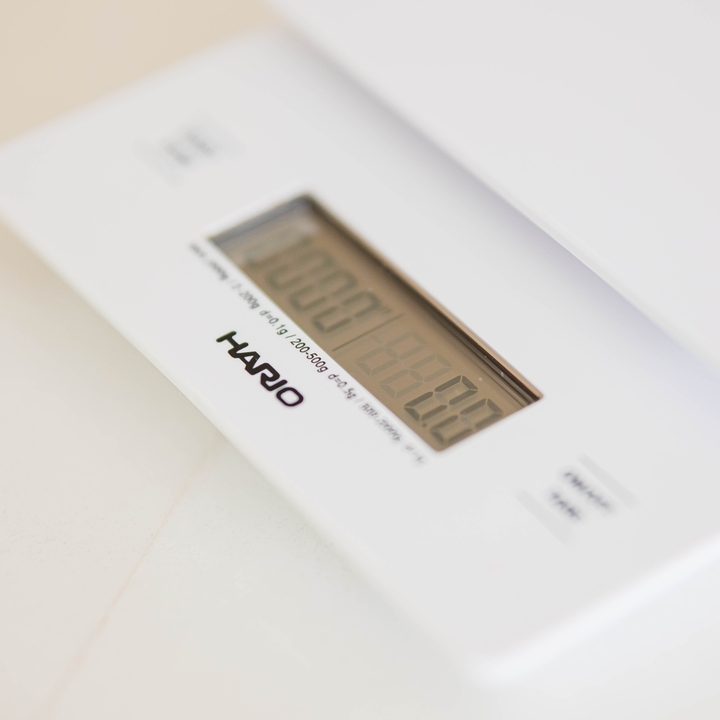
Water
Alessi Plisse
Our previous water kettle bit the dust, and I couldn’t figure out how to fix it.
I searched for something with a large capacity, a precise-pouring spout, and an appearance that would fit into our kitchen. My choice is the Alessi Plissé. I’ve always admired Alessi for their quality and attention to design. The list of designers they have worked with is a who’s who of design.
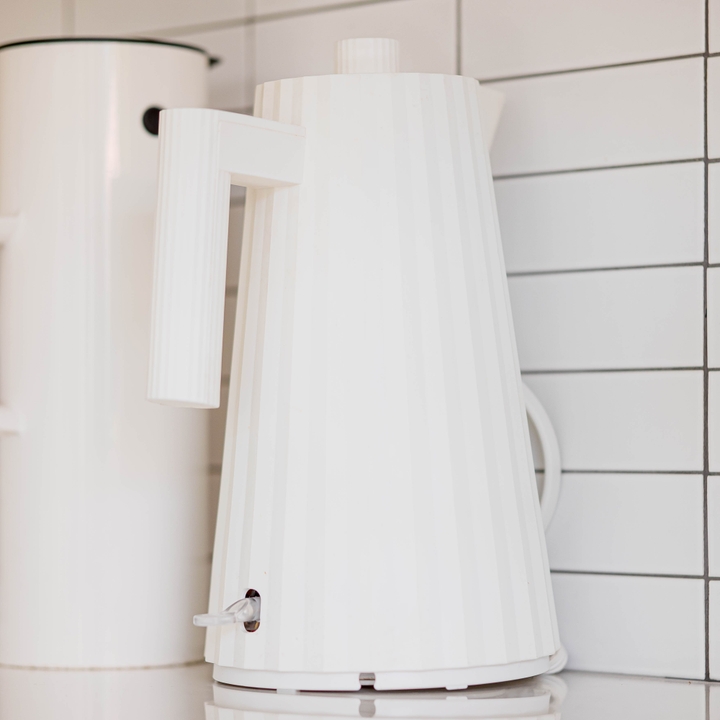
Michele De Lucchi, who also designed the Artemide Tolomeo that sits on my desk, designed the Plissé. Its pleated surface mimics an haute couture dress. It looks striking yet understated enough to blend into the background when not in use. The capacity is large enough to make two cups of coffee while leaving some extra water to put in our vacuum jug for later. Notably, the sharp spout is precise enough for pour-over coffee.
Stelton EM77
We put extra hot water in a vacuum jug for drinking tea later in the day. After a jug from Amazon broke irreparably, I looked around for a replacement. I found the Stelton EM77 while touring Heath Ceramics. The EM77 was designed in 1977 and has stood the test of time. It’s beautiful, simple, and functional. The lid stays firmly sealed in the upright position, but gravity works to open it when you tilt it to pour, making for effortless one-handed operation. It does a great job of keeping our water hot for much longer than the one we had before.
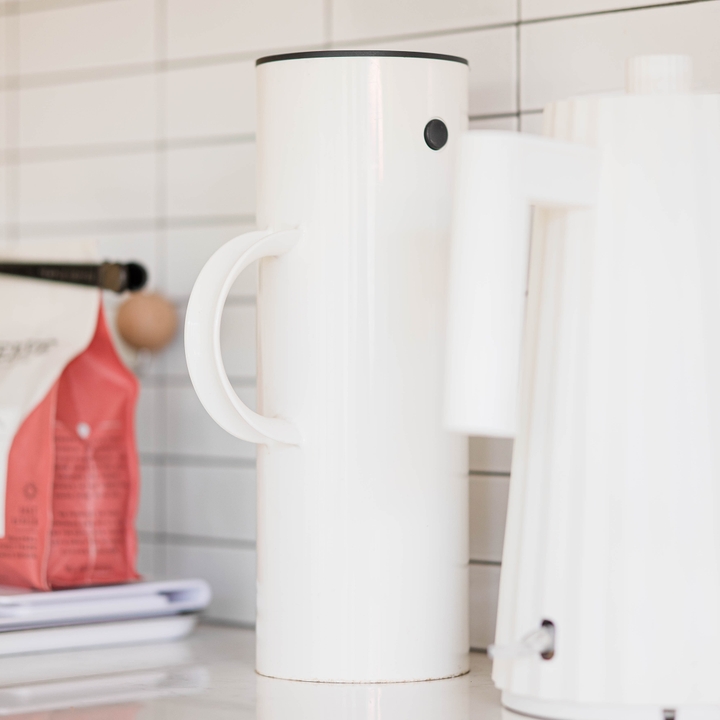
Rubber parts are not long-lasting. Hence, we must periodically replace them. Fortunately, the Stelton EM77 is designed to be completely disassembled and its parts replaced. We recently replaced the rubber seal, and the jug has continued to perform perfectly.
Brewers
Aeropress
The simplest brewer in my collection is the Aeropress. As the name suggests, it uses a pressing motion to force water through coffee grounds. However, it shouldn’t be confused with an espresso machine, as the pressure isn’t high enough.
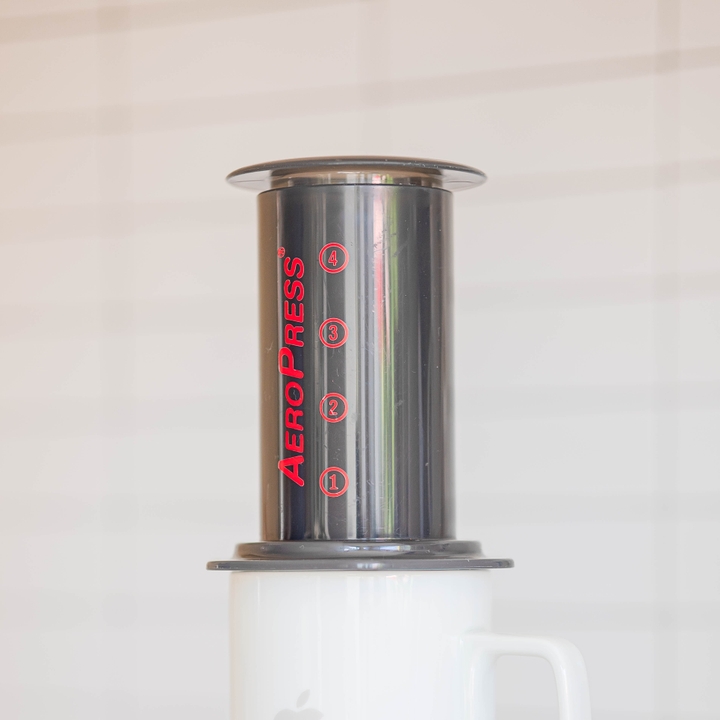
I choose the Aeropress when I want a simpler, shorter brewing experience. Using James Hoffman’s method, I get a great cup every time. On occasion, I’ll try an alternate approach from AeroPrecipe. Some creative ones involve inverting the brewer and even alternate filter types.
Chemex
The Chemex is one of those ubiquitous classics. I’ve seen it on television, in movies, at friends’ houses, and in offices. Learn more in James Hoffman’s excellent video about the Chemex. We have the six-cup model with the wooden collar. It balances producing perfect coffee while looking great out on a shelf.

I turn to the Chemex when I need to brew two or more cups, like when entertaining friends and family.
Hario V60
The Hario V60 is quite similar in design to the Chemex. In a cone-shaped funnel is placed a cone-shaped paper filter. A single large hole in the bottom channels brewed coffee straight down.
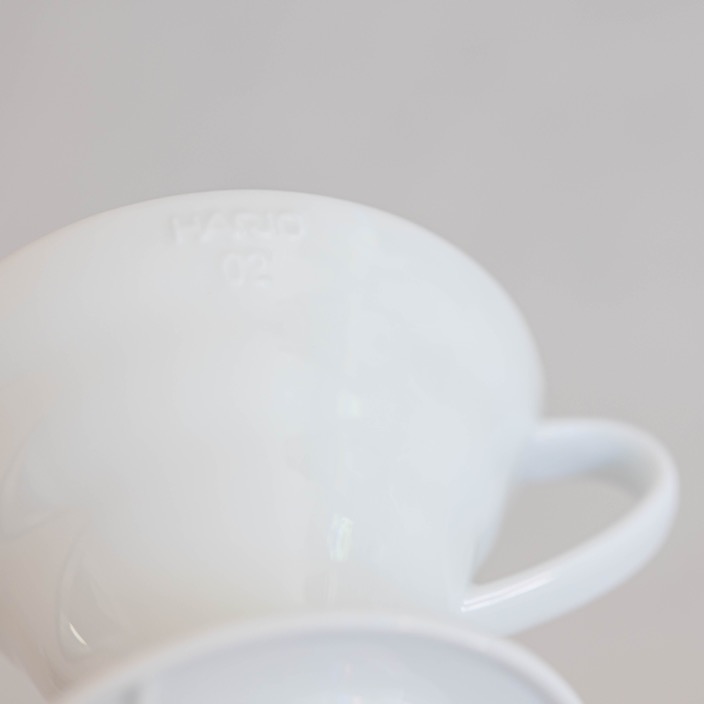
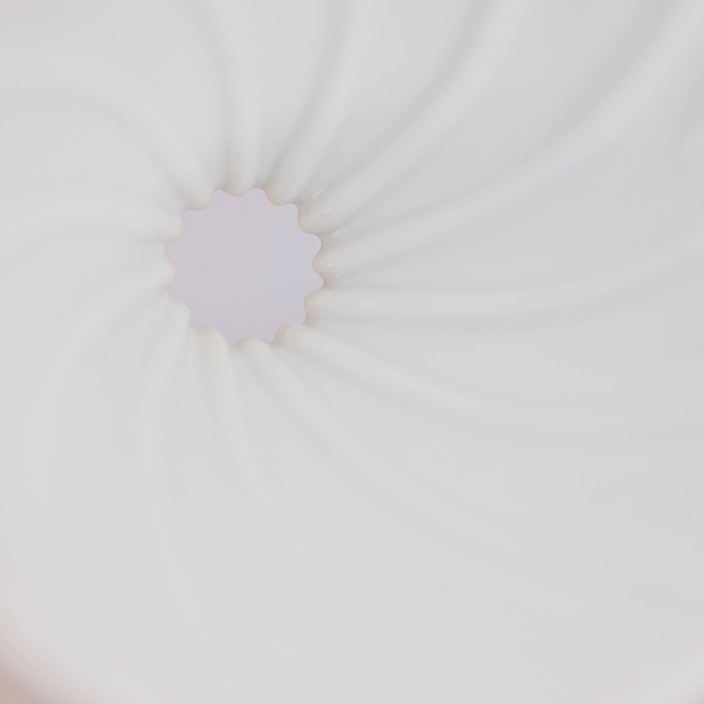
The Chemex has a pouring spout that doubles as an air gap. The Hario V60 uses spiral ridges to create a thin, symmetrical air gap around the cone.
I use the Hario V60 02 directly on a coffee mug and on the V60 decanter when brewing two cups.
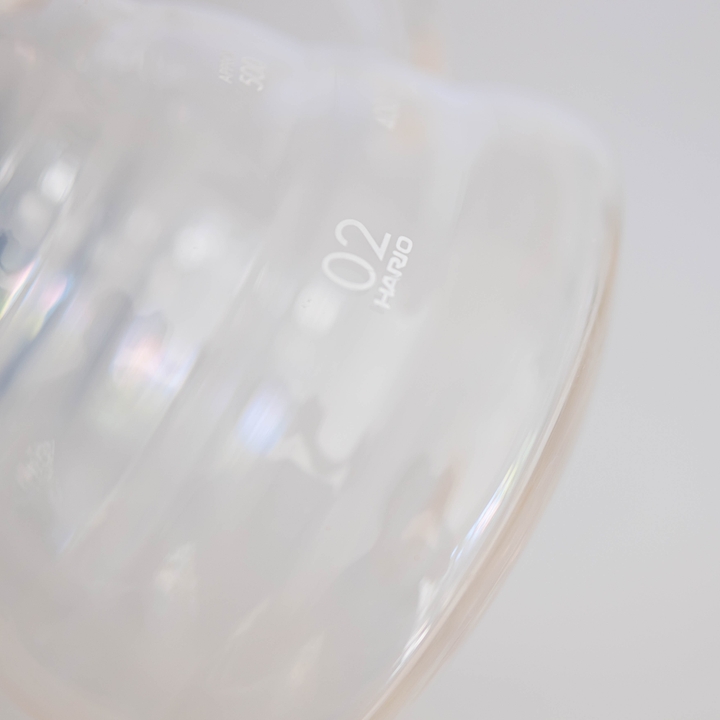
Kalita Wave Sagan 155 by Hasami
This Kalita Wave Sagan is the newest of my brewers. From afar, it may look like the V60, but don’t be fooled. The flat bottom features three tiny holes for coffee to drip from and three ridges to prop up the filter. These filters are wavy, like what you may have seen in a restaurant coffee maker.
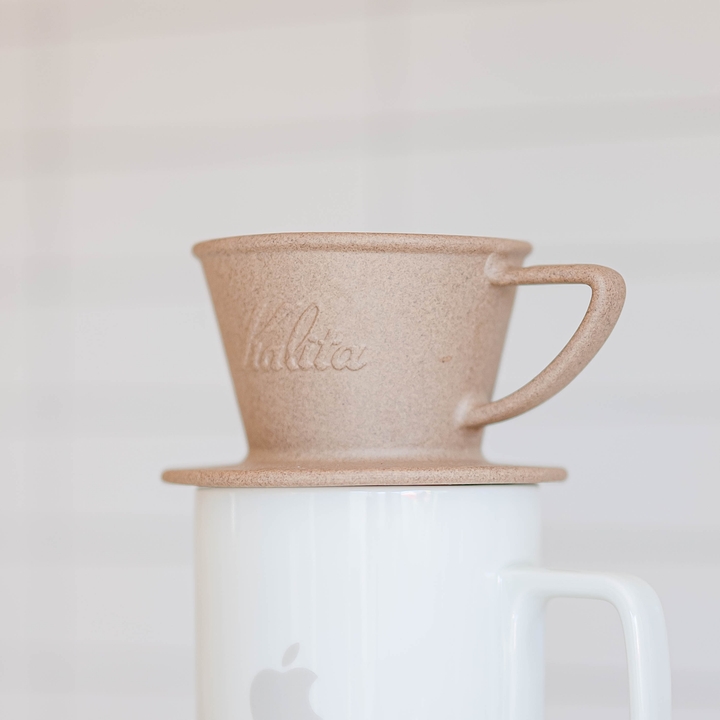
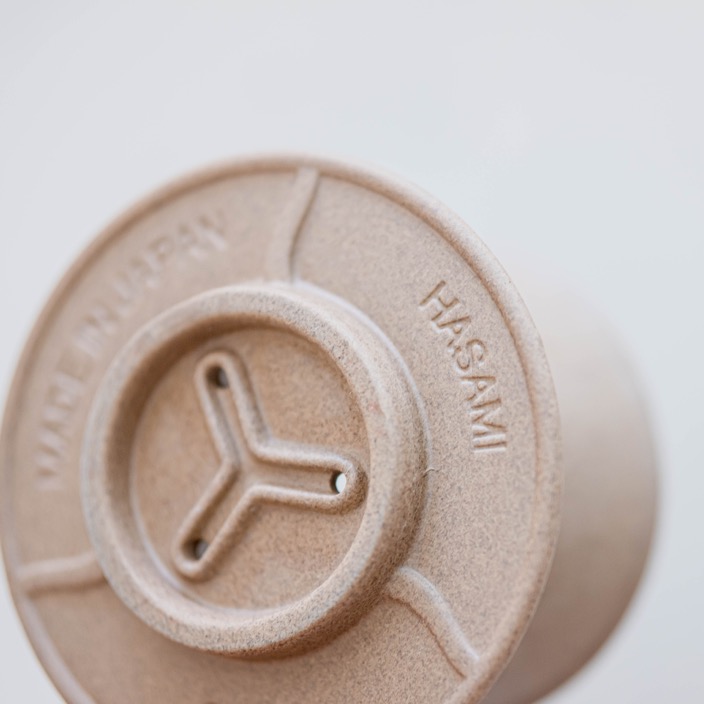
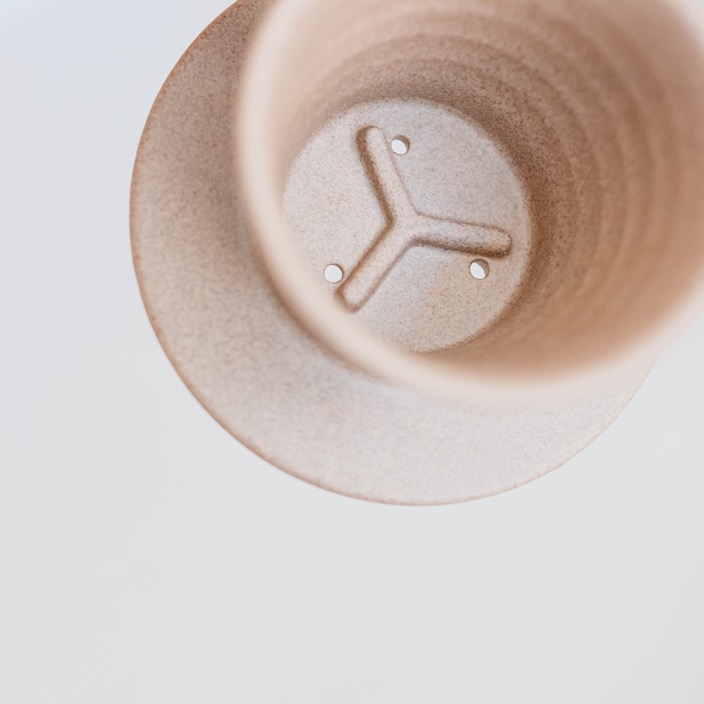
The classic Kalita Wave is made from stainless steel, but I chose this uncommon example made by Hasami Porcelain.
After a few failed attempts, I found Goerge Howell’s pulse method. I adjusted the measurements (keeping the ratios the same) to make the process easier to follow. I use 14.5 grams of coffee and pour 40 mL every 30 seconds.
I prefer using the Kalita Wave on weekends when I have more time and attention to pay to the process.
Mugs
We use a variety of mugs at home, but a few stand out.
Blue mug by my wife
My wife is a ceramicist and used to dedicate much of her free time to the art. One of my favorite pieces is the blue polka dot mug. Drinking coffee from a mug, she spent hours making by hand brings a special feeling to the experience.

Apple mug by Hasami Porcelein
There are only two places on earth where you can regularly buy Apple-branded souvenirs, the Apple Park Visitor Center and Apple Infinite Loop. At the latter, you can find mugs made by Hasami, among other things.
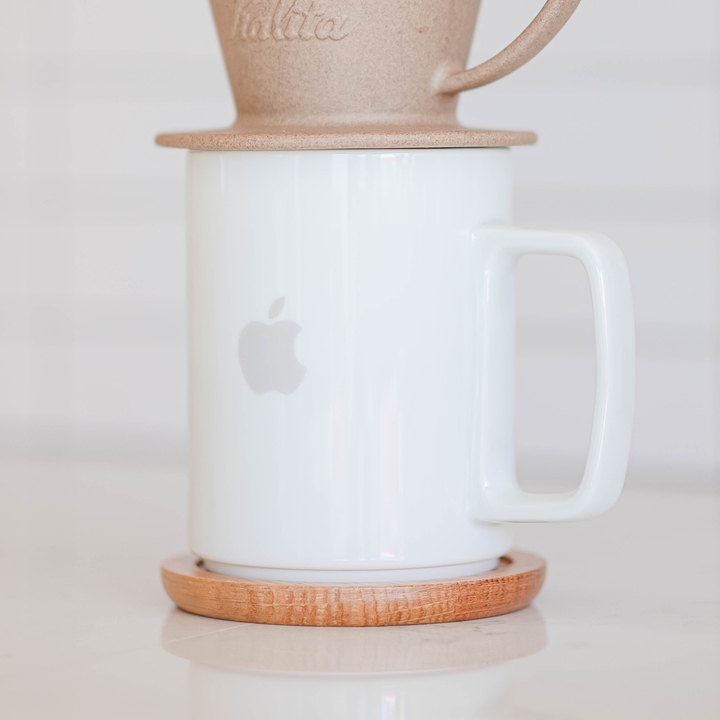
This mug is a subtle reminder of the company that has dramatically shaped my life.
Miscellaneous items
IKEA SAMMANHANG tray
I rely on a small IKEA tray to keep the whole setup together. I originally wanted a white tray, but my wife suggested this black, which effectively bringing the individual pieces together.
Temple Coffee clip scoop
This coffee scoop doubles as a clip for bags that don’t seal tightly. I picked this one up at one of my favorite local roasteries, Temple Coffee. They are affordable and available in many colors on Amazon as well.
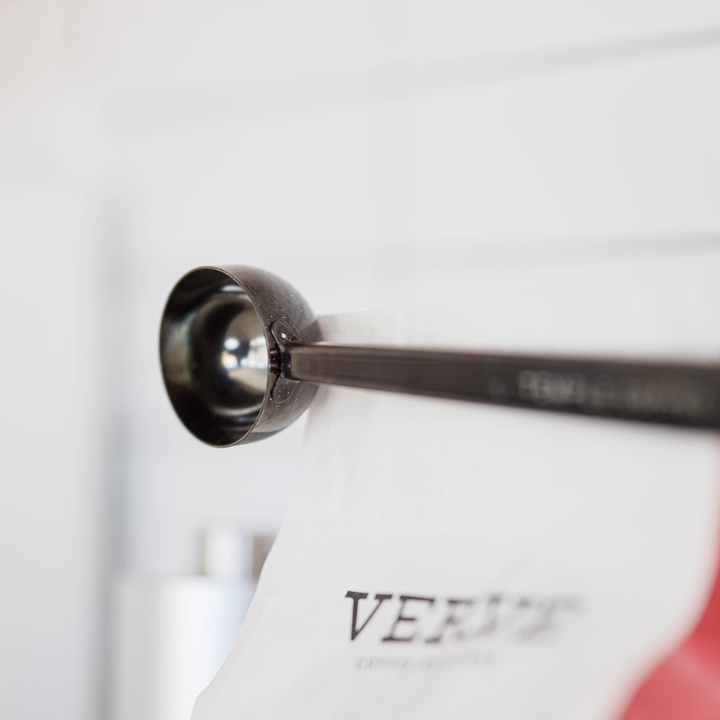
Brush
I bought this inexpensive brush to keep my grinder clean between sessions. It’s handy with oily beans that can clog the grinder.
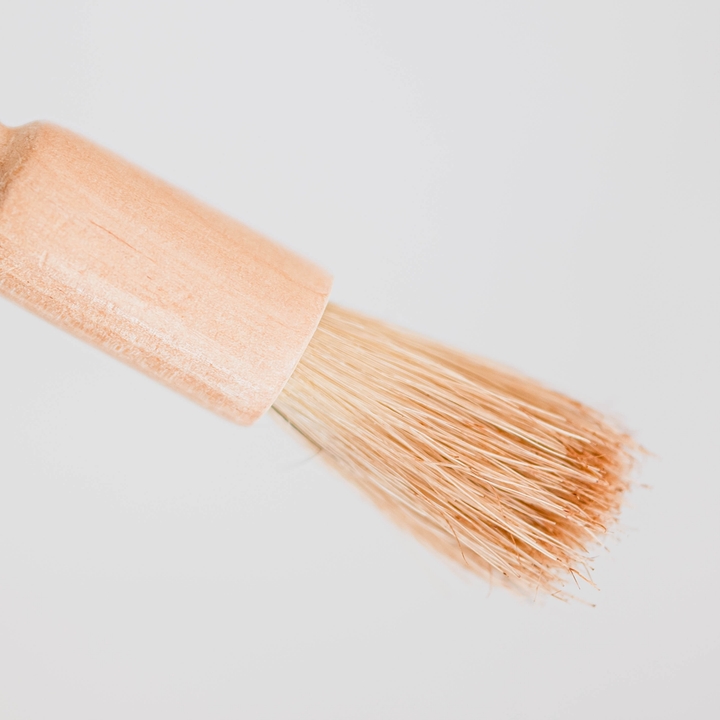
Yamazaki Distillery coaster
Finally, if I’m using the Chemex or the Hario V60 decanter, I’ll use this coaster to protect my countertop. I picked it up at the Yamazaki Distillery years ago.

The setup to end all setups
Walking into the kitchen with my kid every morning and making coffee together is my favorite way of starting the day. The sheer use these objects see makes them some of the best value for money of anything I’ve purchased.
Furthermore, pour-over is simple and elegant, needing no electronics. The variety of brewers out there also offers an inexpensive way to change things up.
Since I’m avoiding getting a home espresso setup, I still have that to look forward to on trips and visits to the cafe.
Photographs shot using:
Thanks to Q for reading drafts of this.
Coffee illustration inspired by Tim Boelaars.